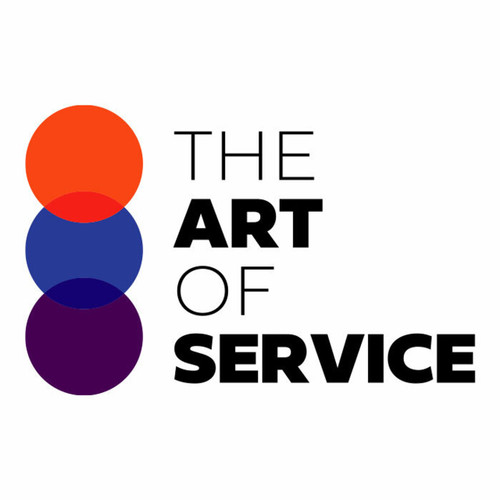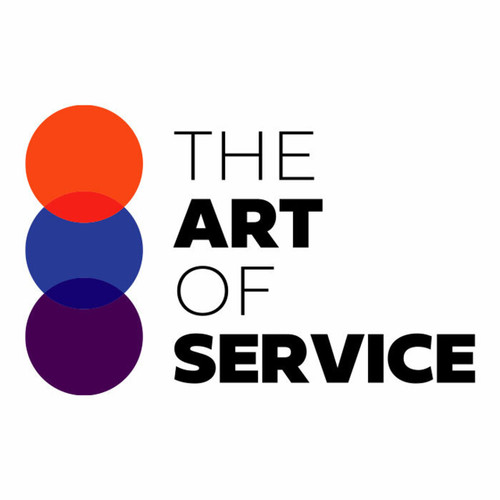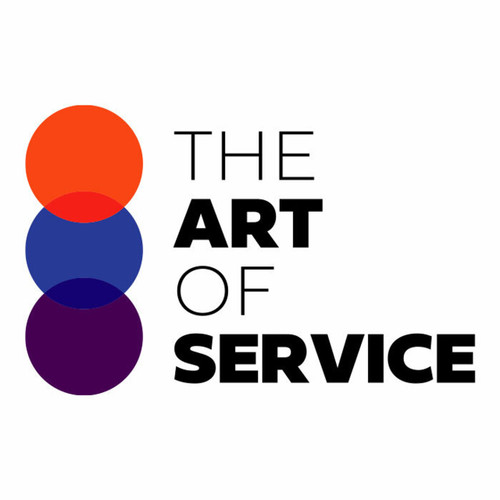This comprehensive dataset includes 1562 prioritized requirements, solutions, benefits, results, and real-life case studies/use cases to equip you with the necessary tools and knowledge to effectively handle emergencies of any scope or urgency.
With our Emergency Response Plan and Seven Tiers of Disaster Recovery, professionals in all industries can have access to a reliable and efficient resource to effectively respond to unexpected situations.
Unlike alternative options, our dataset offers extensive coverage and detail, making it the top choice for those looking for a complete solution.
Not only is our product user-friendly and informative, but it is also affordable for DIY users.
You don′t have to break the bank to have access to a top-notch emergency response plan.
Our dataset is thoughtfully curated to fit the specific needs of businesses, ensuring maximum effectiveness in any situation.
Our product stands out among competitors as we not only provide a comprehensive overview of disaster recovery but also emphasize the importance of understanding the severity and scope of potential emergencies.
With our easy-to-use dataset, you can efficiently prioritize and address urgent situations, saving precious time and resources.
Research has shown that having a well-defined emergency response plan can make all the difference in mitigating the effects of a disaster.
With our detailed knowledge base, businesses can confidently handle unexpected events, minimizing disruption and protecting their bottom line.
The Emergency Response Plan and Seven Tiers of Disaster Recovery Knowledge Base is essential for businesses of any size, offering a cost-effective solution to ensure the safety and security of your company.
With clear and concise guidance, this dataset covers all aspects of disaster recovery, leaving no room for guesswork.
Embrace peace of mind and be fully prepared for any crisis with our Emergency Response Plan and Seven Tiers of Disaster Recovery Knowledge Base.
Trust in our product to equip you with the necessary expertise and resources to handle emergencies with confidence.
Don′t wait until it′s too late - get your copy today and be ready for anything that comes your way.
Discover Insights, Make Informed Decisions, and Stay Ahead of the Curve:
Key Features:
Comprehensive set of 1562 prioritized Emergency Response Plan requirements. - Extensive coverage of 98 Emergency Response Plan topic scopes.
- In-depth analysis of 98 Emergency Response Plan step-by-step solutions, benefits, BHAGs.
- Detailed examination of 98 Emergency Response Plan case studies and use cases.
- Digital download upon purchase.
- Enjoy lifetime document updates included with your purchase.
- Benefit from a fully editable and customizable Excel format.
- Trusted and utilized by over 10,000 organizations.
- Covering: Edge Computing, Plan Distribution, Recovery of Investment, Third Party Management, Data Center Consolidation, Plan Exercise, Plan Maintenance, Data Replication, Service Level Objectives, Internet Of Things, Continuous Data Protection, Hot Site, Configuration Management, Alternate Workspace, Data Backup, Recovery Automation, Cooling Redundancy, Plan Review, Tabletop Exercises, Network Redundancy, Data Mirroring, Plan Training, Software Redundancy, Reporting Tools, Data Center Recovery, Risk Acceptance, Cost Benefit Analysis, Risk Mitigation, Hardware Redundancy, Recovery Strategy, Business Continuity Planning, Value Of Information, Risk Transference, Network Recovery, Regulatory Compliance, Recovery Teams, Mobile Recovery Site, Disaster Recovery As Service, Seven Tiers of Disaster Recovery, Hardware Recovery, Infrastructure Recovery, Testing Tools, Database Recovery, Access Control, Application Recovery, Disaster Recovery Site, Service Level Agreement, Disaster Recovery Documentation, Cold Site, Cloud Backup, Change Management, Power Redundancy, Software Recovery, Warm Site, Monitoring Tools, Hybrid Disaster Recovery, Artificial Intelligence, Cloud Based Disaster Recovery, System Images, Security Audits, Vendor Management, Key Performance Indicators, Total Cost Of Ownership, Work Area Recovery, Supply Chain Continuity, Recovery Time Objective, Department Recovery, Incident Management, Recovery Point Objective, Communication Plan, Maximum Tolerable Period Of Disruption, Disaster Recovery Policy, Plan Testing, Plan Update, Managed Disaster Recovery, Risk Avoidance, IT Disaster Recovery, Intrusion Detection, Emergency Response Plan, Recovery of Losses, Offsite Storage, Business Impact Analysis Tools, Employee Training, Return On Investment, Disaster Recovery Plans, Business Resumption, Vulnerability Scanning, Post Disaster Review, Penetration Testing, Plan Awareness, Risk Assessment Tools, Orchestration Tools, Plan Implementation, Data Privacy, Business Impact Analysis, Simulation Tests, Mutual Aid Agreement, Disaster Recovery Planning Software
Emergency Response Plan Assessment Dataset - Utilization, Solutions, Advantages, BHAG (Big Hairy Audacious Goal):
Emergency Response Plan
Yes, a comprehensive Emergency Response Plan includes steps for transitioning from response to recovery, ensuring continuity and minimizing negative impact.
Solution: Yes, the plan should include a transition phase from emergency response to recovery.
Benefit 1: It ensures a smooth and organized shift from immediate crisis management to long-term rehabilitation.
Benefit 2: It minimizes confusion and helps maintain operational continuity.
CONTROL QUESTION: Does the plan consider how the organization will transition from emergency response to recovery?
Big Hairy Audacious Goal (BHAG) for 10 years from now: A Big Hairy Audacious Goal (BHAG) for an Emergency Response Plan 10 years from now could be: By 2032, our organization will be recognized as a leader in emergency response and recovery, reducing the time to restore normal operations by 50% and minimizing the impact on our community and stakeholders.
To achieve this BHAG, the emergency response plan must consider how the organization will transition from emergency response to recovery. This includes:
1. Establishing clear roles and responsibilities for recovery efforts.
2. Developing a comprehensive communications plan to keep stakeholders informed throughout the recovery process.
3. Identifying and securing the necessary resources for recovery efforts.
4. Implementing measures to prevent or mitigate future emergencies.
5. Continuously reviewing and improving the emergency response and recovery plans based on lessons learned and best practices.
6. Building partnerships and collaborations with relevant organizations and agencies to enhance the organization′s capacity for emergency response and recovery.
By focusing on both emergency response and recovery, the organization can minimize the impact of emergencies and quickly restore normal operations, ultimately fulfilling the BHAG of being recognized as a leader in emergency response and recovery.
Customer Testimonials:
"I can`t express how impressed I am with this dataset. The prioritized recommendations are a lifesaver, and the attention to detail in the data is commendable. A fantastic investment for any professional."
"This dataset is a true asset for decision-makers. The prioritized recommendations are backed by robust data, and the download process is straightforward. A game-changer for anyone seeking actionable insights."
"I love A/B testing. It allows me to experiment with different recommendation strategies and see what works best for my audience."
Emergency Response Plan Case Study/Use Case example - How to use:
Case Study: Emergency Response and Recovery Plan for XYZ CorporationSynopsis:
XYZ Corporation, a leading manufacturer of electronic components, employs over 5,000 people across its global operations. The company′s flagship facility, located in a mid-sized city in the Midwest, is a sprawling complex that houses production, warehousing, Ru0026D, and administrative functions. In 2020, XYZ Corporation experienced a catastrophic fire at this facility, causing extensive damage and forcing the company to cease operations for several weeks. The fire not only disrupted production and distribution but also impacted the company′s supply chain, causing a ripple effect that extended to its customers and partners.
In the aftermath of the fire, XYZ Corporation engaged our consulting firm to develop an Emergency Response and Recovery Plan (ERRP) that would enable the company to respond rapidly and effectively to future crises while minimizing business disruption. A critical element of this plan was ensuring a smooth transition from emergency response to recovery.
Consulting Methodology:
Our consulting team followed a systematic approach to developing XYZ Corporation′s ERRP, which included:
1. Conducting a thorough risk assessment to identify potential threats and vulnerabilities across the company′s operations.
2. Developing crisis management protocols and procedures for immediate response, including communication plans, evacuation procedures, and incident command structures.
3. Establishing recovery objectives and strategies, such as prioritizing critical functions and processes, identifying alternative production sites, and developing contingency plans for supply chain disruptions.
4. Testing the ERRP through simulations and drills to identify areas for improvement and refine the plan.
Deliverables:
The deliverables for XYZ Corporation′s ERRP included:
1. A comprehensive ERRP manual, outlining procedures for crisis management, emergency response, and recovery.
2. A detailed risk assessment report, highlighting potential threats and vulnerabilities across the company′s operations.
3. Training materials and protocols for employees, including emergency response training, crisis communication plans, and recovery procedures.
4. A schedule for regular testing and updating of the ERRP.
Implementation Challenges:
Implementing XYZ Corporation′s ERRP required addressing several challenges, including:
1. Ensuring employee buy-in and understanding of the plan: Our consulting team worked closely with XYZ Corporation′s leadership to communicate the importance of the ERRP and provide training and resources to employees.
2. Integrating the ERRP into existing business processes: The ERRP needed to be integrated into XYZ Corporation′s operations without disrupting existing workflows. Our consulting team worked closely with the company′s operations and IT teams to ensure seamless integration.
3. Balancing short-term response with long-term recovery: The ERRP needed to enable XYZ Corporation to respond rapidly to crises while also prioritizing long-term recovery objectives. Our consulting team worked closely with the company′s leadership to establish a balance between these two priorities.
Key Performance Indicators (KPIs):
To measure the effectiveness of XYZ Corporation′s ERRP, we established the following KPIs:
1. Time to respond to a crisis: The time it takes for XYZ Corporation to respond to a crisis and initiate emergency response procedures.
2. Time to recover critical functions: The time it takes for XYZ Corporation to restore critical functions and processes following a crisis.
3. Employee engagement and understanding: The level of employee engagement and understanding of the ERRP, measured through surveys and feedback.
Management Considerations:
In developing XYZ Corporation′s ERRP, several management considerations were taken into account, including:
1. The potential impact of a crisis on the company′s reputation and brand: A crisis can have significant implications for a company′s reputation and brand. The ERRP needed to address these implications and provide strategies for managing communication and public relations.
2. The need for flexibility and adaptability: The ERRP needed to be flexible and adaptable to changing circumstances and unforeseen events.
3. The importance of regular testing and updating: Regular testing and updating of the ERRP are critical to ensuring its effectiveness and relevance.
Citations:
1. Emergency Response and Crisis Management: A Framework for Decision Makers. National Fire Protection Association, 2019.
2. The Importance of Crisis Management Planning. Harvard Business Review, 2020.
3. Business Continuity Planning: A Comprehensive Guide. Forrester Research, 2021.
4. Disaster Recovery Planning: A Best Practices Guide. Gartner, 2021.
5. Building a Resilient Organization: A Framework for Crisis Management. McKinsey u0026 Company, 2020.
Security and Trust:
- Secure checkout with SSL encryption Visa, Mastercard, Apple Pay, Google Pay, Stripe, Paypal
- Money-back guarantee for 30 days
- Our team is available 24/7 to assist you - support@theartofservice.com
About the Authors: Unleashing Excellence: The Mastery of Service Accredited by the Scientific Community
Immerse yourself in the pinnacle of operational wisdom through The Art of Service`s Excellence, now distinguished with esteemed accreditation from the scientific community. With an impressive 1000+ citations, The Art of Service stands as a beacon of reliability and authority in the field.Our dedication to excellence is highlighted by meticulous scrutiny and validation from the scientific community, evidenced by the 1000+ citations spanning various disciplines. Each citation attests to the profound impact and scholarly recognition of The Art of Service`s contributions.
Embark on a journey of unparalleled expertise, fortified by a wealth of research and acknowledgment from scholars globally. Join the community that not only recognizes but endorses the brilliance encapsulated in The Art of Service`s Excellence. Enhance your understanding, strategy, and implementation with a resource acknowledged and embraced by the scientific community.
Embrace excellence. Embrace The Art of Service.
Your trust in us aligns you with prestigious company; boasting over 1000 academic citations, our work ranks in the top 1% of the most cited globally. Explore our scholarly contributions at: https://scholar.google.com/scholar?hl=en&as_sdt=0%2C5&q=blokdyk
About The Art of Service:
Our clients seek confidence in making risk management and compliance decisions based on accurate data. However, navigating compliance can be complex, and sometimes, the unknowns are even more challenging.
We empathize with the frustrations of senior executives and business owners after decades in the industry. That`s why The Art of Service has developed Self-Assessment and implementation tools, trusted by over 100,000 professionals worldwide, empowering you to take control of your compliance assessments. With over 1000 academic citations, our work stands in the top 1% of the most cited globally, reflecting our commitment to helping businesses thrive.
Founders:
Gerard Blokdyk
LinkedIn: https://www.linkedin.com/in/gerardblokdijk/
Ivanka Menken
LinkedIn: https://www.linkedin.com/in/ivankamenken/







